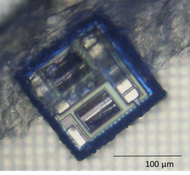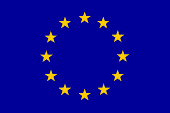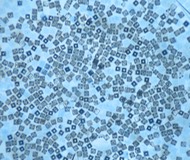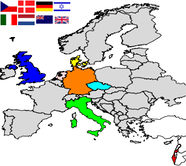Association and dissociation of macro and microstructures
One central functionality of chemically reactive electronic agents is the docking of a lablet to a docking station or the association of two lablets to form a gemlab. The recognition of the different entities is mediated by sequence selective nucleic acid binding. Equally important is to achieve the separation of lablets and the removal from a surface by an external stimulus.
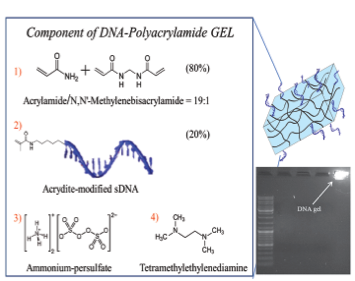
Figure 1. Composition of DNA hydrogel together with proof for chemical cross-linking by gel electrophoresis.
At the start of the project we employed DNA hydrogels as microscopic objects to study their sequence specific assembly. For that purpose, we synthesized a two complementary 14mer oligonucleotide sequences that are functionalized at the 5’-end with a polymerizable acrylamide unit. Each of these DNA units was incorporated into a polyacrylamide hydrogel by radical polymerization that consisted of the following components: Acrylamide and methylenebisacrylamide (ratio 19/1) and acrylamide-DNA (Fig 1). The proof for gel formation was established by subjecting the resulting materials to gel electrophoresis. The formation of the hydrogel and the covalent incorporation of the oligonucleotides could be clearly documented by the fact that the cross-linked materials are not mobile within the gel and can be stained by ethidium bromide, a DNA specific fluorescent dye.
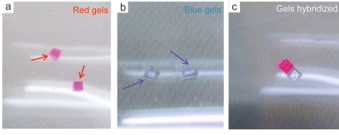
Figure 2. The DNA hydrogels stained with Rhodamine 6G (a) and Coomassie brilliant blue (b). The hybridization of single blue and red gels (c).
With these materials in hand we started to fabricate hydrogel blocks by simply cutting cubes with dimensions of 5 x 5 x 3 mm. The resulting objects with the two sequences were stained with a blue and a red dye to label them with a colour code. Subsequently, both types of gels were mixed in TBE buffer at 30°C and shaken in a petri dish. If two cubes with the same colour are mixed, no association takes place (Fig. 2a and 2b). However, if a red and a blue cube were introduced in the same petri dish association was immediately observed upon the first contact of the cubes (Fig. 2c). This clearly shows that macroscopic objects can be assembled with DNA as a guide. When the solution is heated to 50°C, the cubes separate upon shaking, which shows that the association process is reversible.

